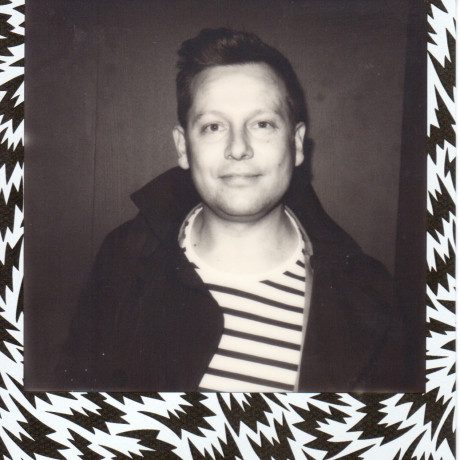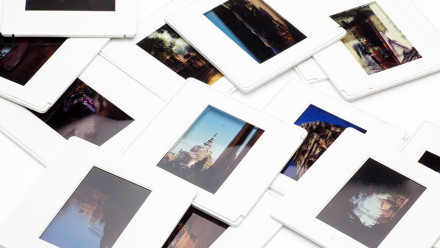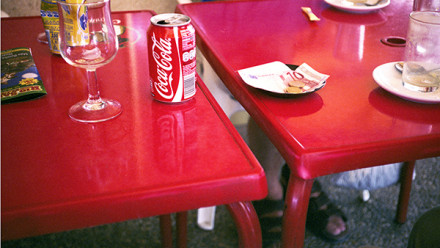Analogue Tribes
Hello. I’m ANTON and I have a son, Peter, who is very small and my daughter Anna is even smaller. They are both ‘digital natives’. A relatively new term used to describe a generation of people who have been born into an all-digital world.
I on the other had been born into an analogue world and have experienced the transition into this new and familiar digital landscape. I’m a ‘digital immigrant’.
The very first piece of music I bought was a 7” vinyl record, the mail we received then was mostly hand-written or typewritten, physical letters and had to be delivered by a postman/woman. My childhood photo album is made up from a handful of [mostly] black and white prints, which were produced from a negative, Polaroids, and colour transparencies.
In contrast, I have over 23,000 images in my respective folders of my kid’s childhood so far, not to mention countless videos [mostly made with an iPhone]. Somehow though, the value of each digital photograph found on my Mac seems significantly less than those physical prints in my photo album. The impact of each photograph seems to be diluted.
As a professional photographer and filmmaker, I made the transition to digital pictures in 2003 and have shot almost exclusively in that format since then, but over the last handful of years I’ve noticed a revival of everything analogue.
A large portion of photography books I acquired last year feature work which has been produced using various film formats. In the main-stream, Polaroids have been resurrected by the Impossible Project and Fuji Instax range. Lomography are keeping film alive and are becoming more visible in general, darkrooms for hire are popping up in trendy parts of London and workshops for historic processes such as Wet Plate Collodion are seeing resurgence. Also, many camera manufacturers are now styling their new cameras to look like ‘old school’ analogue cameras so the trend is even apparent in digital cameras.
So is there a movement for analogue photo tech? Or is this simply a trend? Has this tech ever really gone away? Is keeping analogue formats alive important to help shape the way our kids and the next generation see, think and experience photography? Will it make them value it more?
These questions formed the basis for Kevin Meredith’s ‘Analogue Tribes’ project.
Kevin’s project follows individuals, communities and organisations and aims to gain an insight to the revival of analogue photographic methods and at the least, document the movement.
It was Kevin’s [Kevin Meredith’s, AKA Lomokev] ‘Fragmented Portraits’ project that caught my attention. With a blog by the same name, the project features a series of trend-spotting portraits using a technique called ‘sampling’. The portraits are made up of 5 individual images [close ups of feet, knees, waist, chest, and head), which are then montaged together to create one ‘fragmented’ composition.
All portraits are shot on 35mm film using the Lomo LC-A, a Russian made compact camera. The fixed lens camera and film stock gives the photos it’s distinct lo-fi analogue look, however, it’s not the kit or so much the aesthetic that I was interested in. I was more drawn to the image making process and the value added to the experience of making a portrait in this way.
I was lucky enough to film Kevin in action for a project of my own and witnessed how he works; hawk-eyed, he quickly spots ‘trendy’ characters, makes a brisk approach and before you know it, he is positioning the bewildered strangers against an urban backdrop and getting to work with his Lomo LC-A and a ruler. For the ‘techies’ out there it’s worth pointing out that Lomo LC-A has only 4 focus zones (0.8 m, 1.5 m, 3 m or ∞) and to ensure images are in focus and are consistent Kevin uses a 80cm ruler to measure the distance between himself and his subject.
Starting from the ground up, Kevin works his way from feet to head, carefully placing the ruler between the subject and the camera. It is slightly unnerving to watch him place the ruler on the subject, especially when he gets to the head and the ruler is sometimes only centimetres away from the subject’s eyes.
For the people involved, the unusual approach seems to jolt them out of their regular daily routine and leaves them with the memory of a ‘surreal analogue experience’ as Kevin calls it. It’s my thinking that they will go on to share and talk about [their experience] for days to come. It also draws plenty of attention with many passers by stopping and asking questions, keen to understand more about the process and output.
I whip out this little black camera, which most people haven’t seen before, and instantly they take notice
Kevin told me why shooting in this way appeals to him and why he prefers analogue over digital: ‘I whip out this little black camera, which most people haven’t seen before, and instantly they take notice, which helps to break the ice. Then I whip out the ruler and place it near their eye and it becomes this surreal analogue experience. if I had a digital camera, I think people will just take it for granted and I become the same as all other photographers.”
He completes the shoot, taking just one frame per section, with the exception of the headshot where he allows himself the luxury of 3 shots, ‘just in case they blink’.
Kevin’s contribution to PhotoBite are all over the site – so check out his profile, links and content via the links
Take a peek at this accompanying film as produced by the team at Lots of Little Ideas…





